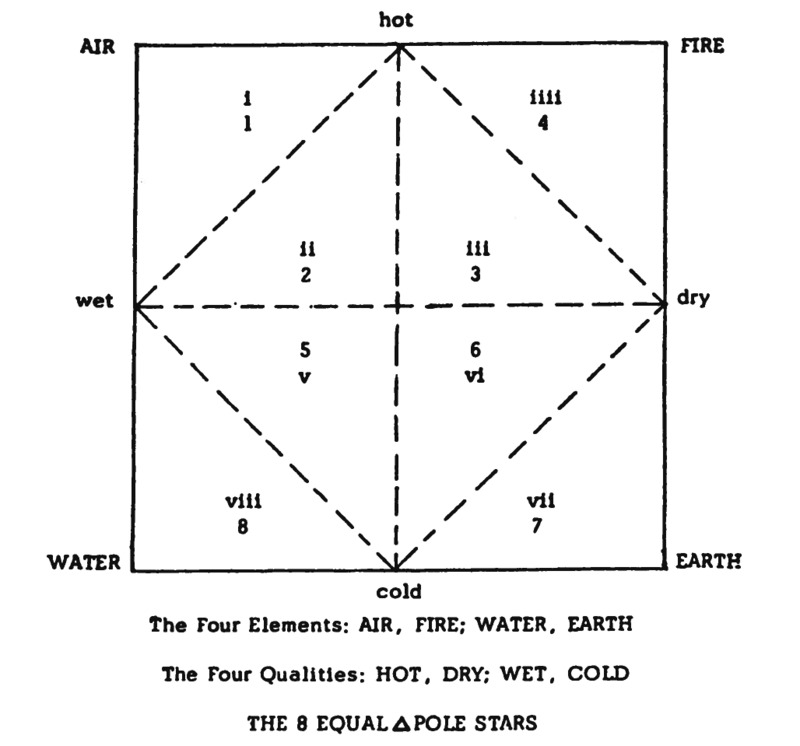Diagram of the Principle of the Law of Opposites
Item
-
Title
-
Diagram of the Principle of the Law of Opposites
-
Description
-
If we were asked; at what point would you begin a lecture on the "Deification Of Man"? I would have had to explain the answer in terms of my understanding of the following forces that made the difference between myself and all of the other living creatures around and about me . Thus,I could have said it in the [depcited] symbol, which is otherwise known as:
THE FOUR QUALITIES and FOUR ELEMENTS
of the
DIAGRAM OF THE PRINCIPLE OF THE LAW OF OPPOSITES.
The theory in the above "Diagram" comes from my earliest ancestors who inhabited the banks along the Blue and White Nile and Great Lakes High-Cultures that reached their zenith in Ta-Merry, Ta-Nehisi, Itiopi, Mercie and Puanit. This teaching has been mistakenly assigned solely to the Ta-Merrians [Egyptians) and Ta-Merry [Egypt] by so-called Western Egyptologists and other European and European-American "academicians" who can only relate it scientifically to the qualities. But there is no doubt that before the 1st Dynasty in ca. 3100 B. C. E. or ca. 4100 B.C.E., probably as early as 5100 B.C.E., it was considered the symbol that depicted the INNER SELFour African ancestors spoke about with respect to the "TRANSMUTATION [migration) OF THE SOUL",which is still the basic prerequisite they told us must be accomplished in order to realize the "DEIFICATION OF MAN".
These can be explained scientifically in terms of three [3] doctrinal positions: a] opposites or conflicting contraries, b] transmutation or the fluidity of change and, c) the functional life of the universe caused by "the Four[4] Elements": FIRE, WATER, EARTH, AIR.
-
Designer
-
Ben-Jochannan, Yosef
-
Date
-
1975
-
Source
-
Understanding the African Philosophical Concept Behind the "Diagram of the Law of Opposites"
-
Bibliographic Citation
-
Ben-Jochannan, Yosef. 2005. Understanding the African Philosophical Concept Behind the "Diagram of the Law of Opposites." Black Classics Press. Page 2
-
depict things of type
-
Typological or Classification

